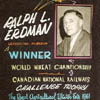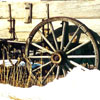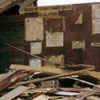Early Years
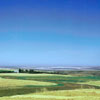 In 1904, Estonian pioneers, after a tumultuous journey across Eastern Europe and North America, established the first farming community in the area of Barons, Alberta. Others soon followed. In the years thereafter, newly arriving pioneers transported their supplies from Lethbridge, Granum, and Claresholm by foot or wagon, populating the village of Barons and its surrounding farmland. Trips between Barons and Lethbridge were made frequently; however, prior to the advent of paved highways and automobiles, the destinations were not always easily accessible. Gus Erdman facilitated this journey by leaving markers along the route so that he could stay the course without wandering off the path.
In 1904, Estonian pioneers, after a tumultuous journey across Eastern Europe and North America, established the first farming community in the area of Barons, Alberta. Others soon followed. In the years thereafter, newly arriving pioneers transported their supplies from Lethbridge, Granum, and Claresholm by foot or wagon, populating the village of Barons and its surrounding farmland. Trips between Barons and Lethbridge were made frequently; however, prior to the advent of paved highways and automobiles, the destinations were not always easily accessible. Gus Erdman facilitated this journey by leaving markers along the route so that he could stay the course without wandering off the path.
Barons' geography presented numerous challenges to early pioneer settlers. The area was susceptible to drought, wind storms, and soil erosion. Trees were sparse, and there was no source of water in the immediate vicinity. "Water-witching" became a popular practice whereby one would locate underground water using a forked willow branch or similar instrument. Estonian immigrant Jack Kulpas was formidable at "water-witching" and demonstrated an ability appreciated by many in Barons' arid climate. With neither trees for lumber nor a nearby railway for shipping, settlers in the first decade of the 20th century were forced to build shelters from the only locally available building material, sod.
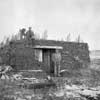 Estonian families, in particular, were adept at constructing sod houses that stayed warm during the winters and cool during the summers. Typically, a sod house was a one-room structure with walls two feet thick. For instance, Martin and Lisa Silberman's first residence was a tiny sod hut three miles south of Barons. Others who built single-boarded one-room shacks often suffered from the cold.
Estonian families, in particular, were adept at constructing sod houses that stayed warm during the winters and cool during the summers. Typically, a sod house was a one-room structure with walls two feet thick. For instance, Martin and Lisa Silberman's first residence was a tiny sod hut three miles south of Barons. Others who built single-boarded one-room shacks often suffered from the cold.
In 1909, the Canadian Pacific Railway purchased the present townsite, establishing an important connection on the Calgary-Lethbridge railway line. Soon, a hardware store and a grocery store were built along with the Union Bank. The town was initially called Baron, after a local railway official. However, people continually added an s to the name; thus, the name Baron gradually shifted to Barons.
Prior to its gaining the name Barons, the town was known as Blayney for a short period. The "Big Store" was built by two local carpenters, complemented by a spacious dance hall on the second floor, appropriately labelled the "Big Hall." The hall represented Barons' premier venue for community gatherings including plays, concerts, political forums, and Chautauqua, a dramatic performance held during the summer months. In time, Barons' first newspaper, The Barons Enterprise, provided local news of Barons' farming community.
The Arnald Hotel was built in 1910, offering alcoholic beverages to loyal customers and guests. At the Arnald, customers could take advantage of Barons' first telephone.
Officials opened the Wheatland Centre School in 1907. The school provided education to students, including Estonian children, living in the vicinity. The school closed in 1915 when it amalgamated with the Barons Consolidated School.
Barons' growth and economic development was important to the Estonian farmers living in the vicinity as it provided them with basic goods and services.

